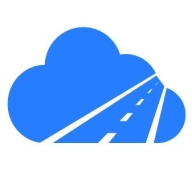

Zapier and Skyvia are competing products in the data integration and automation category. Skyvia appears to have the upper hand due to its robust features and perceived value for the cost.
Features: Zapier provides an extensive integration library, supporting simple automation workflows and ensuring seamless connectivity between thousands of apps. Skyvia offers comprehensive data integration capabilities, advanced data transformation, and cloud data management. Its feature set makes it suitable for complex integration tasks, making it a more feature-rich choice for demanding environments.
Ease of Deployment and Customer Service: Zapier's straightforward deployment model is noted for self-service setup and efficient online resources, facilitating rapid deployment with minimal technical assistance. Skyvia offers a structured deployment with a higher learning curve, supported by detailed documentation and responsive customer service, beneficial for businesses seeking advanced integration with personalized support.
Pricing and ROI: Zapier provides competitive pricing tiers with straightforward plans that attract small to medium enterprises looking for a quick return on investment. Skyvia, although potentially higher in upfront costs for its advanced functionality, demonstrates significant long-term ROI. It is particularly advantageous for enterprises needing complex data solutions, as its in-depth features offer greater value over time.

Skyvia is a cloud-based data integration platform enabling seamless data connection, management, and analysis across cloud apps and databases.
Skyvia offers a comprehensive suite for ETL, data backup, replication, and connectivity across major cloud services. It's designed for users requiring robust data manipulation and transfer capabilities without extensive coding knowledge. Its intuitive tools simplify complex tasks like data synchronization and transformation.
What are the key features of Skyvia?Industries like e-commerce, finance, and healthcare implement Skyvia to achieve efficient data processing and analytics integration, ensuring consistent data flow and real-time insights into operations.
Zapier is a tool for primarily non-technical users to connect together web apps.
An integration between two apps is called a Zap. A Zap is made up of a Trigger and one or more Actions or Searches.
Whenever the trigger happens in one app, Zapier will automatically perform the actions or searches in another app in order.
Zaps are very lightweight and easy to set up. Zaps do not import or export old data (they only operate on new items created after the Zap is enabled). Zaps are also not kept in sync ("two way syncing") after the Zap is triggered.
Zaps are deceivingly simple if you're used to dealing with complex and difficult integrations. Their simplicity is what enables anyone to create them.
We monitor all Cloud Data Integration reviews to prevent fraudulent reviews and keep review quality high. We do not post reviews by company employees or direct competitors. We validate each review for authenticity via cross-reference with LinkedIn, and personal follow-up with the reviewer when necessary.